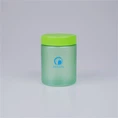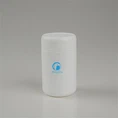Waste containers are essential for safe disposal, whether at home, in healthcare facilities, or in industrial settings. Using the right container helps prevent contamination, improves recycling efficiency, and protects people and the environment. Generally, waste containers can be divided into three main types: general waste containers, recycling containers, and hazardous waste containers.
1. General Waste Containers
These containers are used for everyday trash that cannot be recycled or composted. They include food wrappers, disposable products, and other non-recyclable household or office waste. General waste containers are usually black or dark-colored, making them easy to distinguish.
Key features:
Designed for mixed non-recyclable waste
Commonly found in homes, schools, and workplaces
Must be emptied regularly to maintain hygiene
2. Recycling Containers
Recycling containers are meant for materials that can be processed and reused, such as plastic bottles, glass, cardboard, and metal cans. They are often color-coded (blue, green, or yellow) to encourage proper sorting.
Key features:
Supports environmental sustainability
Promotes separation of recyclable materials
Helps reduce landfill waste and conserve resources
3. Hazardous Waste Containers
Hazardous waste containers are specialized bins used for materials that pose a risk to health or the environment. Examples include medical sharps, chemical residues, and batteries. These containers are usually marked with warning symbols and are made from materials resistant to punctures, leaks, or corrosion.
Key features:
Provides safe storage and disposal of harmful waste
Meets strict safety and regulatory standards
Essential in hospitals, laboratories, and manufacturing sites.
















